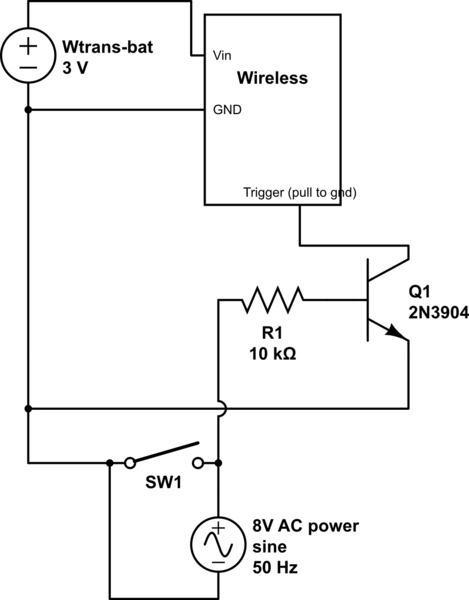The building I live in have an old door-chime system, and I wish send a wireless signal when the door-chime is triggered.
There are multiple push-buttons at different locations connected to the same circuit. The only place I can access my part of the wiring of the old door-chime system is behind one of the push-buttons, the rest of the system is buried behind concrete and walls. There's an AC transformer hooked up to the system to drive a door bell. The bell has been removed some time in the past, and the wires are not accessible - and are probably shorted.
I've measured 8V AC over the button, the button is normally open.
I've a board with a wireless transmitter, it's triggered by pulling an interrupt pin to GND. Powered by a 3v battery.
I want to pull this pin low to trigger the transmitter whenever the doorbell circuit is closed.
My naive idea is something like the following:

simulate this circuit – Schematic created using CircuitLab
Will this work? Or will the AC source (which hits the base and emitter of the transistor) ruin this somehow?


